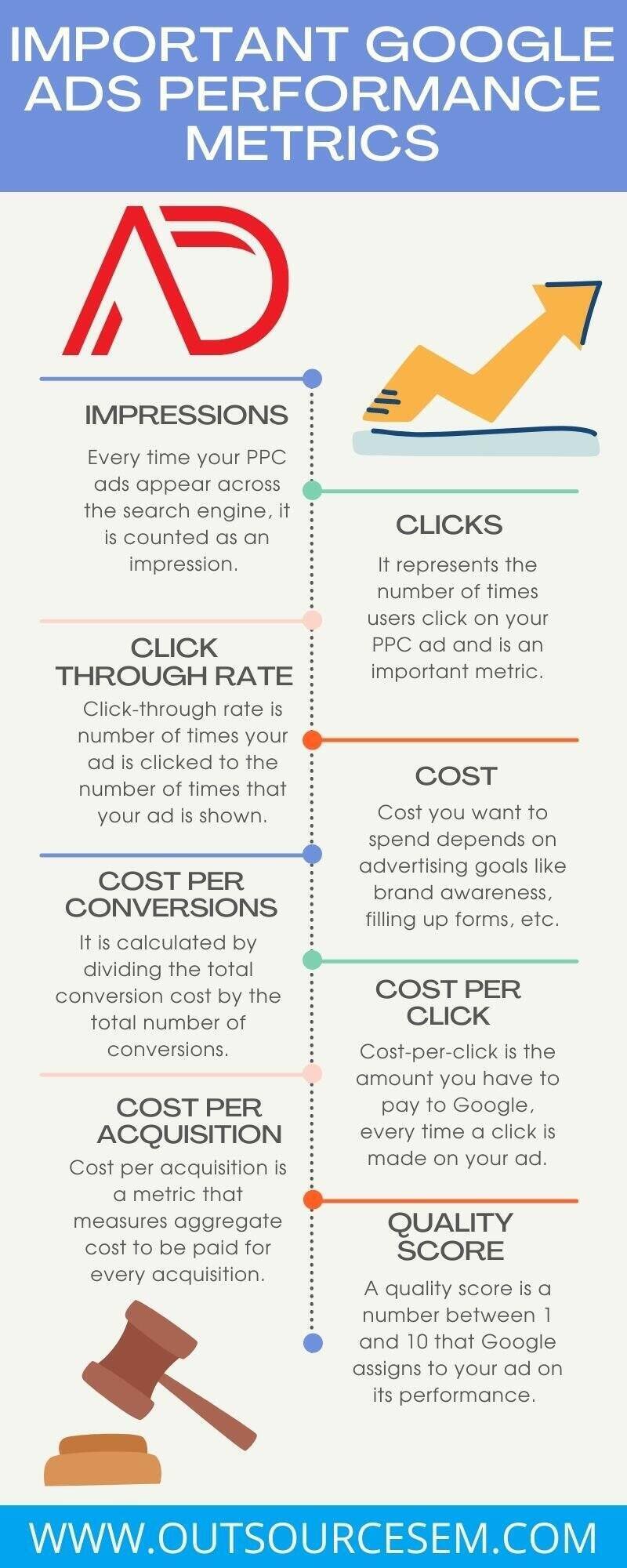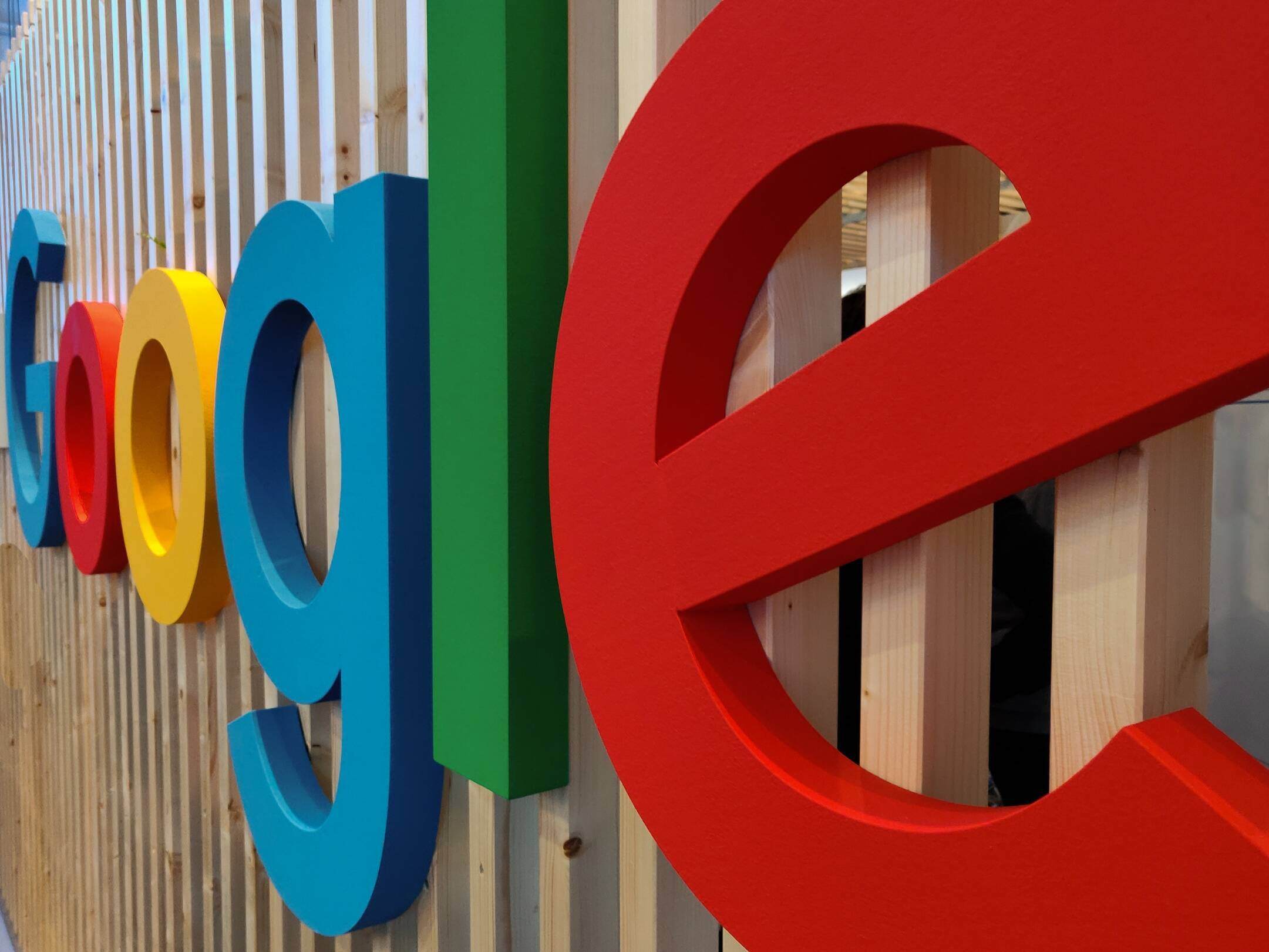One of the significant advantages of online marketing over traditional marketing is that you can measure the performance of your ad campaigns. The world of paid advertising has evolved significantly in recent years so, monitoring every single penny of the ad budget becomes essential to achieve the desired advertising goals. This transformation is mainly due to the increase in the number of advertisers using Google Ads for their business. You should track the performance metrics of ad groups and ad campaigns that reveal how successful your Google Ads are and then conduct a PPC audit to optimize various KPIs like quality score, conversion rate, etc.
With nearly 3.5 billion searches per day, Google Ads, formerly known as Google AdWords, allows you to get in touch with a wide range of audiences. Google Ads allows businesses to reach the target audience looking for exactly what they want. Running result-driven PPC ads is all about matching your ad campaigns with the users' intent. Whether you use Facebook Ads, YouTube Ads, LinkedIn Ads, etc., no set parameter identifies the user’s intent. All these online marketing platforms have their artificial intelligence that signifies the users' activity. With Google Ads account linked with Google Analytics, you can perform a PPC audit to analyze the performance metrics. You can have insights about your target audience by preparing a PPC report and tracking your ad campaign's performance. It would help you know consumer behavior and determine the types of Google Ads that drive more traffic to your landing page, like responsive ads, shopping ads, etc.
Important Google Ads performance metrics

1. Impressions - Every time your PPC ads appear across the search engine, it is counted as an impression. These ads appear across platforms like Google Ads, Google Display Network, Google Adsense and many other Google partnered sites. You can sometimes see these impressions being abbreviated as “impr”. The higher the number of ad impressions, the more the target audience views your PPC ad. You should have a PPC plan & strategy to make the visitors click on the ad.
It is an important performance metric to track in Google Ads. The world of PPC ads requires money to be paid to search engines every time a click is made on them. With technological advancement, the user’s buying activities keep changing. So, when tracking various KPI metrics, it becomes imperative to have a PPC report on impressions daily, weekly or monthly basis. Even with the launch of mobile-first indexing by Google, it becomes even more important to know how many impressions you get on your PPC ads.
You have the most impatient users to date as 40% users leave a page that takes more than 3 seconds to load. So, even if you have a good impression share, optimizing your ads for mobile devices becomes essential to avoid wasting your ad budget. Although there are many myths regarding PPC advertising, if raising the keyword bidding amount or improving the ad quality helps increase the impression share, then there is no harm in doing it.
In the Google Ads account, there are many PPC metrics to monitor; tracking impression share would help you figure out what ad formats drive more traffic to your landing page, have a better conversion rate, etc. You would get to know which PPC ads in the Google Ads account are performing as desired, like video ads, responsive ads, search ads, text ads, banner ads, etc. It would give a clear idea of which Google ad campaigns have the best ad ROI. Some of the advantages of tracking this performance metric are mentioned below:
• It helps advertisers to monitor cost per click and improve click-through rate.
• Monitor effectiveness of Google ad campaigns.
• Choosing the right social media platforms.
• Which online marketing platforms work best for your business.

2. Clicks – It represents the number of times users click on your PPC ad. This is an important performance metric to monitor. It would help you know how many visitors engage with your ad for the product or service you are providing. In PPC ads, you have to pay money to the search engine every time a click is made on your ad, so you do not wish your ad budget wasted on irrelevant clicks. It helps to know about the ad campaign's health and you then work on a PPC plan & strategy to increase the number of relevant clicks on your landing page.
To increase the number of relevant clicks, you can consider including negative keywords so that your ad budget does not get wasted. You can also increase the number of clicks with social media content as it has a vast audience. If you still do not get the desired number of clicks on the Google Ad campaign, outsourcing PPC services could help.

3. Click through rate - The click-through rate(CTR) is the number of times your ad is clicked to the number of times that your ad is shown. It is another important performance metric to evaluate in your Google Ads campaign. You need to have great ad descriptions, ad copies, eye-catching images, etc., to make the user click on the ad. You need to have enticing content, excellent product page descriptions, etc., to be ahead of your competitors.
You need to focus on the unique selling propositions(USP) of the visitors and work on optimizing them to increase the CTR. You can even consider creating different ad campaigns for the same products or services with changes like various images, different call-to-action tabs, changing headlines, ad descriptions, etc. This A/B testing in the Google Ads account will give you a clear idea of which ad campaign is performing better. You can then work on PPC & strategy to implement the changes to achieve the desired results.
4. Cost - PPC advertising is all about the cost you wish to spend to achieve your desired marketing goals. The advertising cost you want to spend depends on target goals like brand awareness, filling up forms, etc. Whether it is Google Ads, Microsoft Ads, etc., all PPC ads require money to be paid to the search engine every time a click is made on them. So, you need to decide the cost of your ad campaign accordingly.
Many types of Google Ads are available, like shopping ads, responsive ads, etc. and the cost for all these ad campaigns varies. With a proper PPC plan & strategy, you can monitor the cost of your ad campaigns and get the desired results with less ad spend. There are many myths regarding PPC metrics that it is hard to achieve the target goals by spending less on pay-per-click advertising. But with a proper PPC plan & strategy, you can achieve the desired goals with less ad spend and save the extra amount to drive traffic during the holiday or festive season and boost your ads ROI.

5. Cost per conversion - The cost per conversion in Google Ads is another important performance to be analyed. It is calculated by dividing the total conversion cost by the total number of conversions. Conversion in Google Ads are activities that you set in the Google Ads campaign and vary from business to business like signups, purchases, etc. Your conversion will not only be calculated when the user makes a purchase. You have different advertising goals like lead generation, brand awareness, etc. So, every time your desired action is completed, it is calculated as conversion.
Multiple ad campaigns are active in a Google Ads account. Tracking this performance metric, you can figure out the ad campaign that helps you achieve your target goals with minimum ad spend, thus allowing you to use your ad budget more effectively. Having a relevant landing page in addition to the ad design is crucial at this point. It not only affects the cost per click but also signifies the user experience.
Display ads run across various Google Display Network, so tracking this KPI metric becomes even more critical. These marketing channels have users who may have visited your competitors' landing page from various other platforms like Microsoft Ads, social media marketing used by advertisers, etc. So, this becomes more essential to increase users' trust and build a strong relationship for affiliate marketing. You should consider designing your landing page that satisfies the users' intent. It may be an informative long-form landing page, video-based landing page, squeeze landing page, etc.
6. Cost per click - In the Google Ads account, cost-per-click is the amount that you have to pay to Google every time a click is made on your ad. It is another crucial performance metric to measure so that you do not drain your ad budget on irrelevant clicks.
When setting ads in the Google Ads account, you should focus on including negative keywords so that your ad does not pop up for irrelevant search queries. To make the relevant user click on the ads, you should include high-traffic keywords. You also need to focus on choosing the relevant keyword matches for your ads so that your audience targeting is more precise. You also need to monitor the cost per click, keeping the e-commerce trends, PPC trends, SEO trends, etc., so that the visitor moves down the marketing funnel on the landing page.
You need to define the ad budget that you wish to spend for a particular ad campaign. You should work on bid adjustment when running ads during the holiday season, providing special offers on occasions such as Newyear, Thanksgiving, Labor day, etc.
7. Cost per acquisition - Cost per acquisition or “CPA” is a KPI metric that measures the aggregate cost to be paid for every acquisition. It is a crucial performance metric to track. It gives a clear idea of various parameters that you need to focus on to keep the user interested in taking the intended action.
As the name itself signifies, cost per acquisition meaning, the amount that you have to pay for every acquisition. It clearly indicates that you should have eye-catching content, updated images, great product descriptions, etc., to convert visitors into customers. Whatever you decide to be your target goal, Google Ads will count that as an action. Your acquisition may be defined differently defined in the Google Ads account as signups, submissions, purchases, etc. CPA provides you with the option to gauge the Google ads campaign success and is helpful in social media marketing, content marketing, e-commerce PPC, etc.
8. Quality score - The quality score is another important performance metric that you need to monitor in your Google Ads campaign. A quality score is a number between 1 and 10 that Google assigns to your ad. It is a performance indicator designed to show how well your ad campaign is performing. Many factors comprise the quality score like keyword bidding, user experience, ad relevancy, etc. The better the quality score, the higher the chances of cost per click.
You should focus on providing the user with a remarkable landing page experience to be interested in visiting again. You should focus on satisfying the user's search intention so that the user is engaged with your ad. The better the quality score, the better will the ad rank. It will help more visitors to see your ads, increase the number of impressions on your ad, improve click-through rate, etc.

Why monitor Google Ads performance metrics?
Whether you are already running Google Ads campaign or wish to start advertising on the largest search engine, you cannot just create ads and leave them. As this is pay-per-click advertising, you need to consistently monitor the ad campaign's performance so that your ad budget is not wasted. You would have a clear idea of which KPI metrics are essential for your business and needs to be taken care of by monitoring the Google Ads. It would help you remove any ad fatigue that lowers your ad rank and position, improve click-through rate, etc.
To have the best ROI for your Google ads campaign, you should perform a consistent PPC audit. It would help to have a clear idea about whether the ad description, ad copies, bid adjustment, etc., are up to the mark or not. You also need to make sure that the content on the landing page is relevant to the ad displayed on the search engine result page. For businesses just starting with Google Ads, it becomes even more necessary to monitor the performance metrics as it helps build brand awareness, get quick results than search engine optimization, etc. You need to have great content that keeps the user interested in taking the intended action. You can consider adding short videos, increasing page speed, making landing page navigation easy, using customer reviews, etc. Some of the advantages of using Google Ads for businesses of all sizes are:
1. Massive audience - Google is the largest search engine to date. So, any digital advertiser cannot miss the opportunity to get in touch with such a vast audience. You need to make sure that your ads are optimized as per user intent so that your ads are displayed on the top when the user enters a search query. You need to ensure that you have high traffic relevant keywords to target the appropriate audience. You can also include negative keywords to ensure that your ads do not have irrelevant clicks. It helps to showcase your products or services to the target audience. If they are satisfied, there are chances that they will share the feedback of the products or services with friends and colleagues, thus helping in peer-to-peer marketing.

2. Maximize ROI with bidding strategies - A well-created post-click landing page is not the only thing that needs to be done to maximize ROI. To reach your specific market goals with the ad budget that you wish to spend, Google Ads provides you with the option of several bidding strategies. You have the option of cost-per-click bidding, CPM bidding, CPA bidding, etc. You also need to focus that the user has great post-click experience thus increasing your ads ROI.

3. Multiple ad types - Google Ads has various ads that you can use to target the audience. You can even have demographic targeting so that your ads appear to the specified users. You can perform ad scheduling to ensure that your ads appear at the exact time. You should have your ads optimized for mobile devices so that visitors can get in touch with your business 24/7.
4. Reconnect with the visitors - At times, the user reaches your landing page but does not take intended action due to one reason or another. You may have window shoppers on your landing page. It does not mean that they do not like your products or services. It may be that the page load speed was slow, there was a server error, etc. So, to get in touch with these users, you need to perform remarketing. You need to have engaging call-to-action tabs to make the user click on them and increase the user's time on the landing page. It would help if you have great product page descriptions and can offer discounts to make the user get in touch with your business.

Closing thoughts
There have been discussions on the most critical KPI metrics that need to be tracked to improve the Google Ads campaign performance. This blog covers why Google Ads performance metrics need to be monitored. You need to have Google Ads relevance matching with the content shown on the landing page. Different businesses have different target goals. You need to increase the user’s trust with your brand by providing them products or services with the marketing trends, updating content on the landing page, etc. Results on Google Ads is not a one-size-fits-all concept. So, you need to optimize keyword bidding strategy, improve quality score, depending on the advertising budget. You need to conduct keyword research so that the relevant users see your ads on entering the search terms. If you find running Google Ads campaign difficult. You can get in touch with a digital marketing company with expertise in lead generation, PPC audit, PPC campaign analysis, social media marketing, content marketing, offshore PPC, white label PPC report, local service ads, etc. and generate great revenue for your business. At OutsourceSEM, our primary focus is on optimizing the results of your Google Ads campaigns. With extensive experience in the industry and a team of skilled PPC specialists, we are committed to achieving tangible outcomes and improving the effectiveness of your ads. We customize our strategies to suit your specific requirements, ensuring that you achieve optimal results. Our specialized PPC services, such as plumbing PPC, electrician PPC, flooring PPC, roofing PPC and lawyer PPC are tailored to enhance the performance of your campaigns if you operate in plumbing, electrician services, flooring, roofing, lawyer services, small business, or HVAC. Contact us today to hire our professional PPC experts.
References:
• 5 Useful & easy Google Ads metrics you should monitor
• Google Ads metrics: how to make sense of your PPC data
